
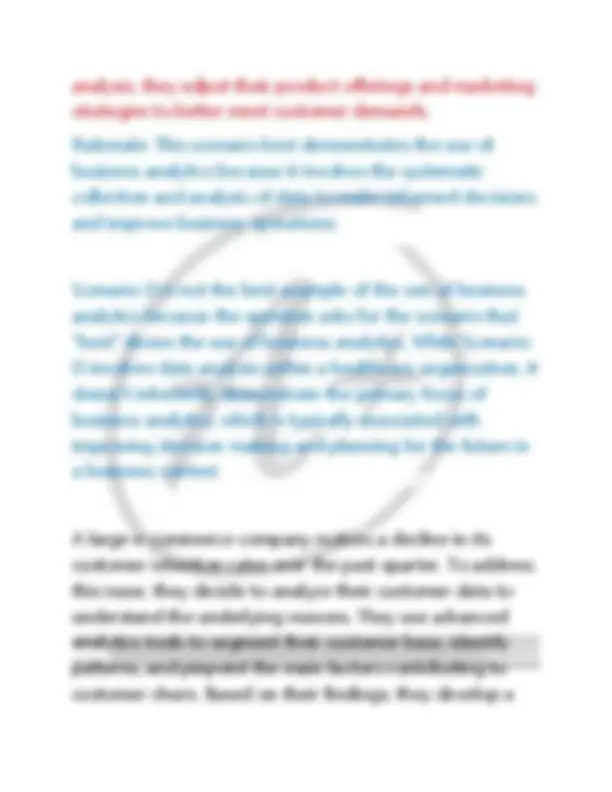
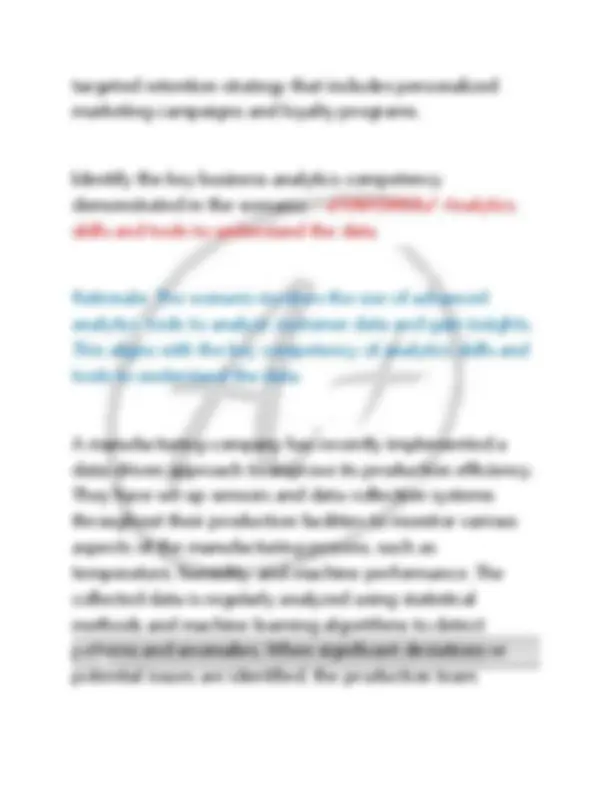
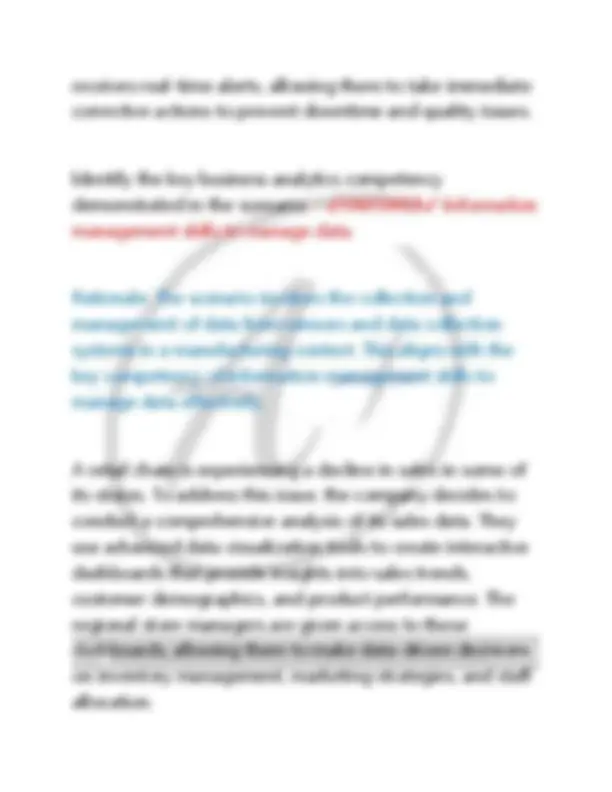
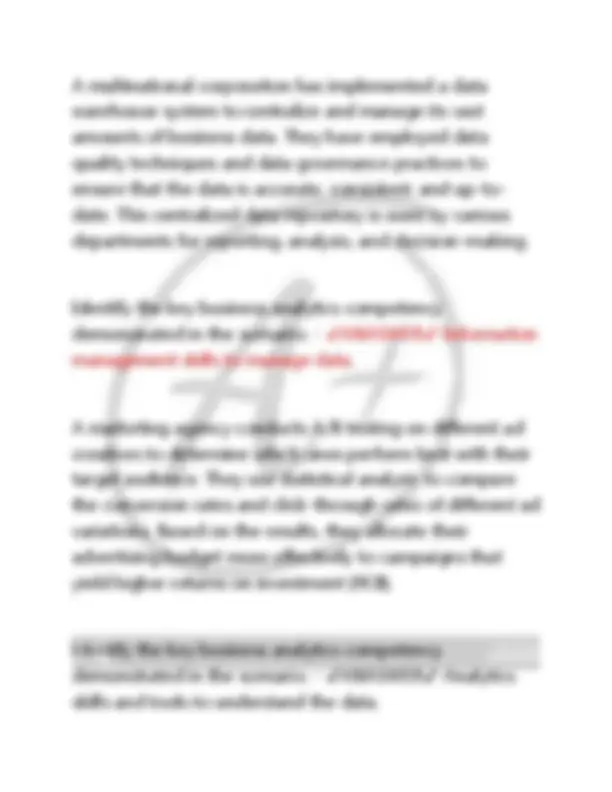
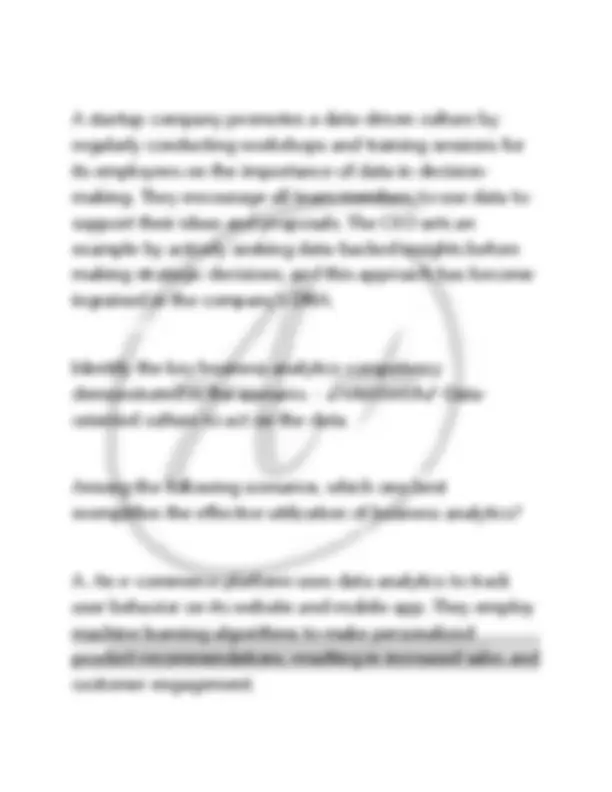
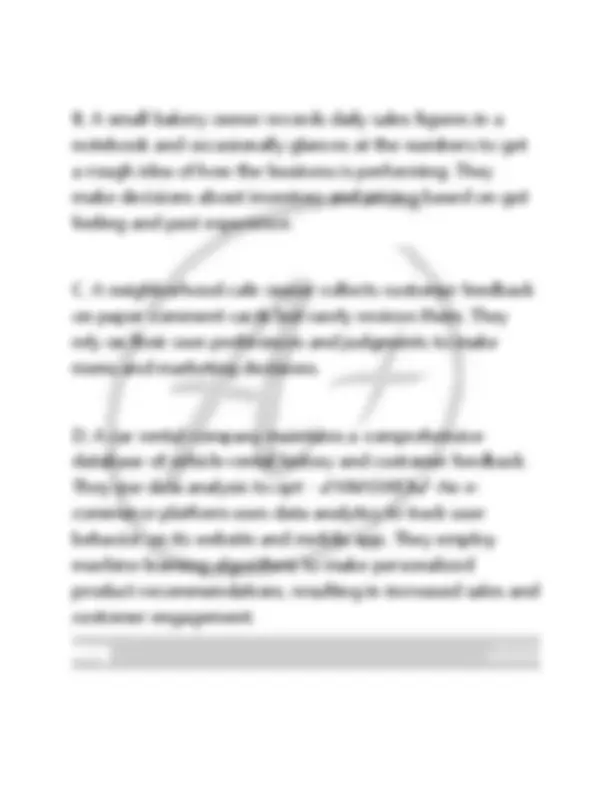
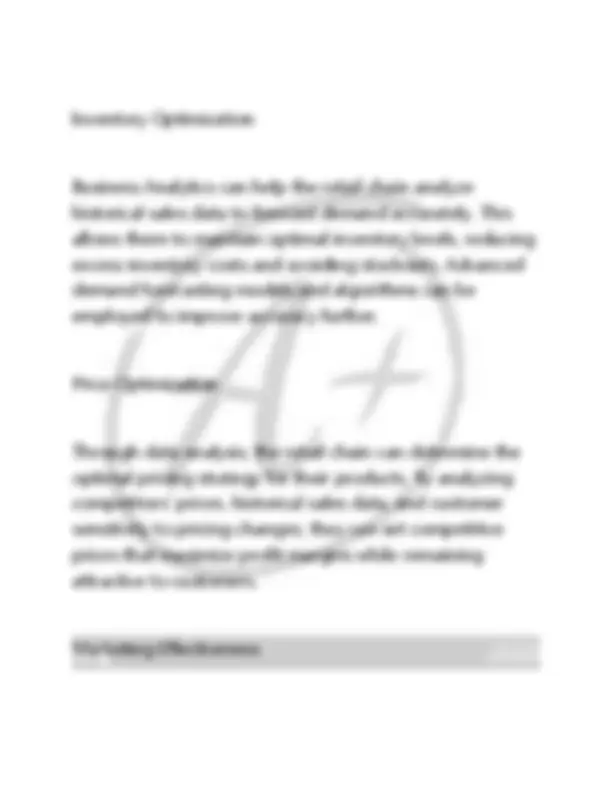
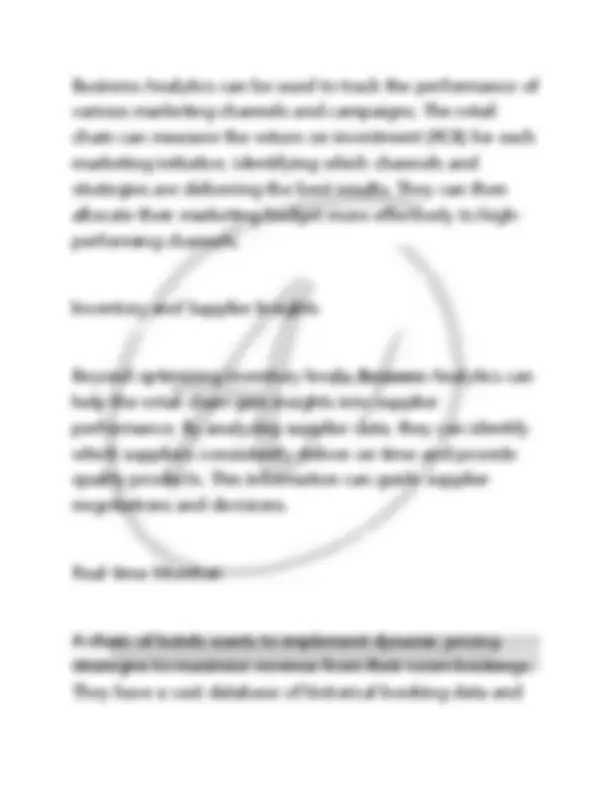
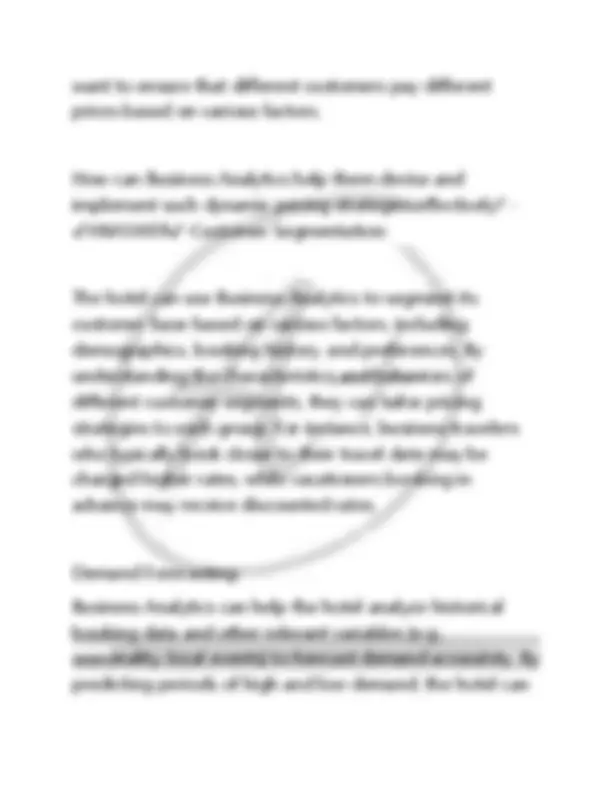
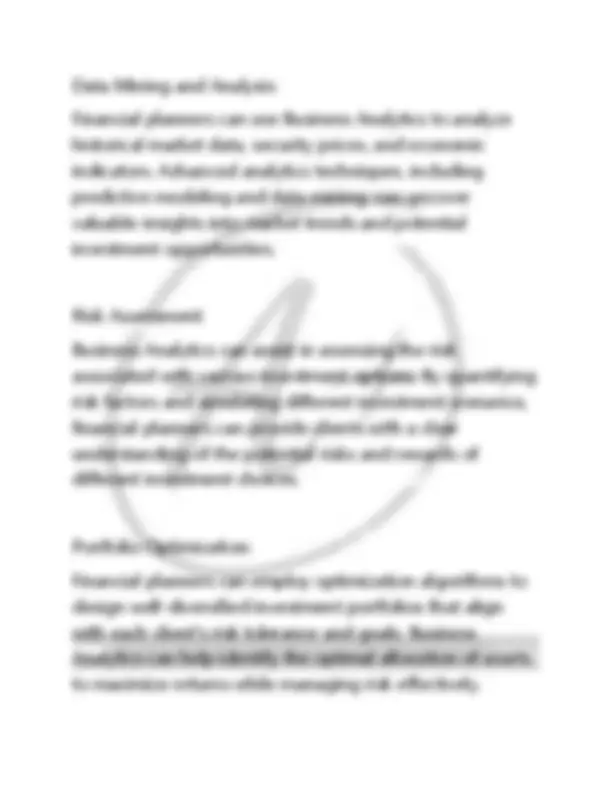
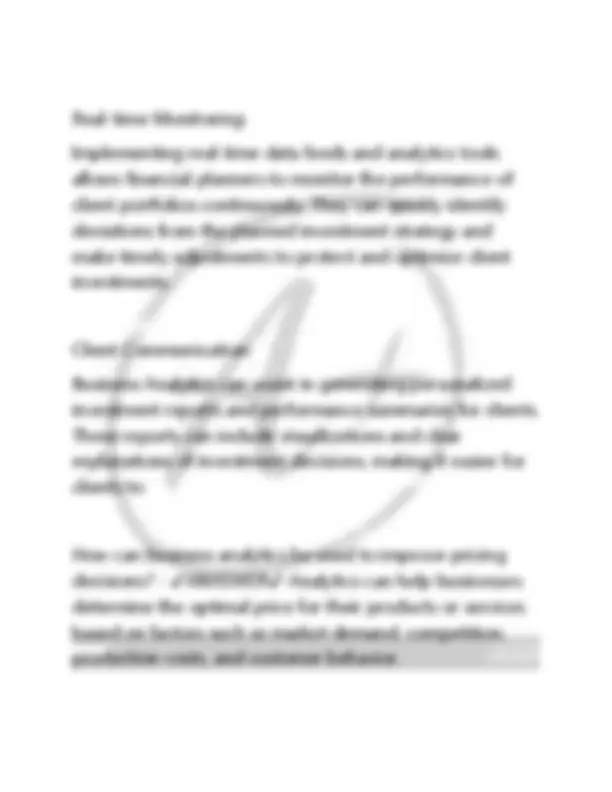
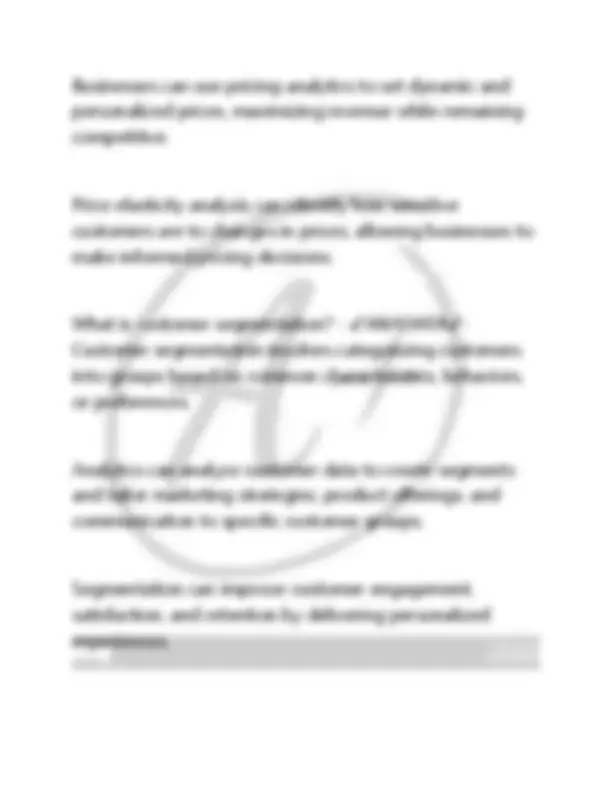
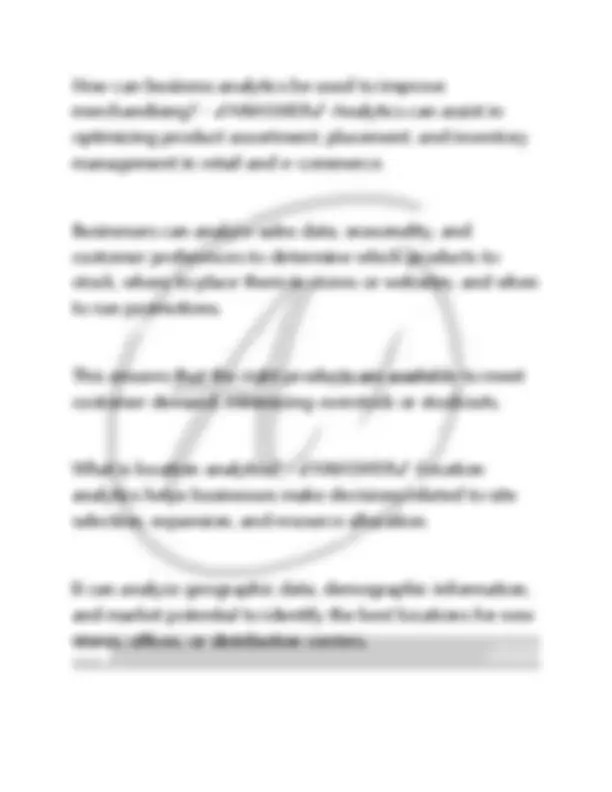
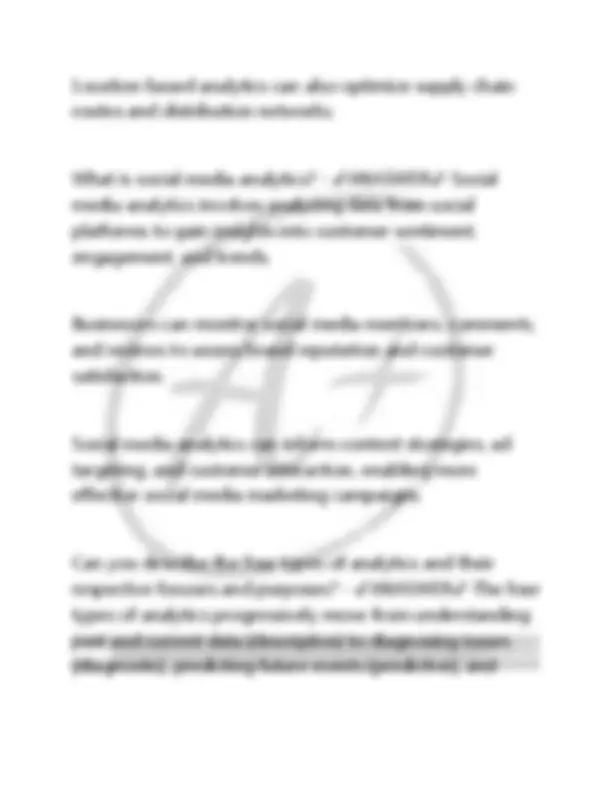
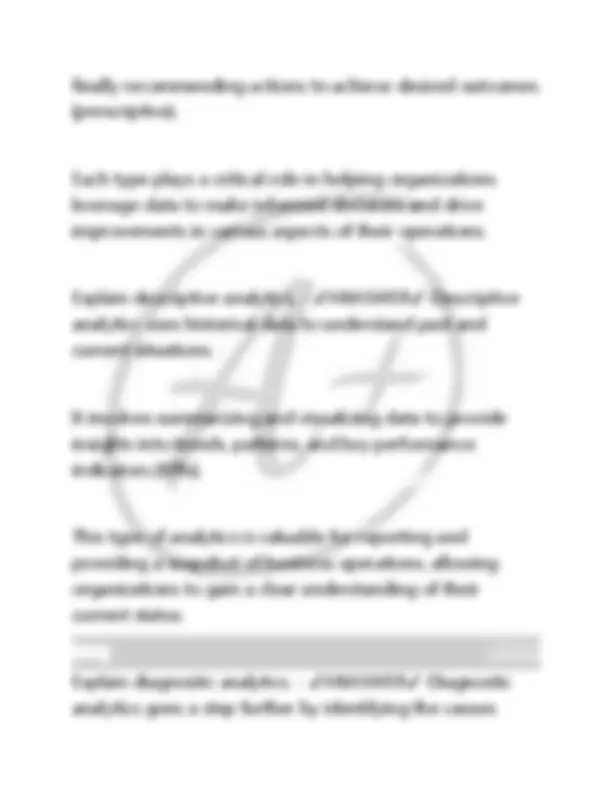
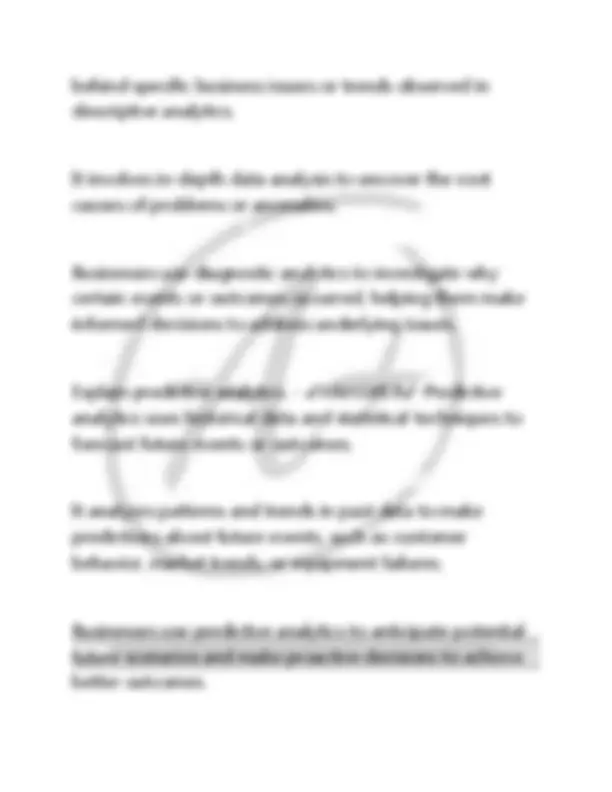

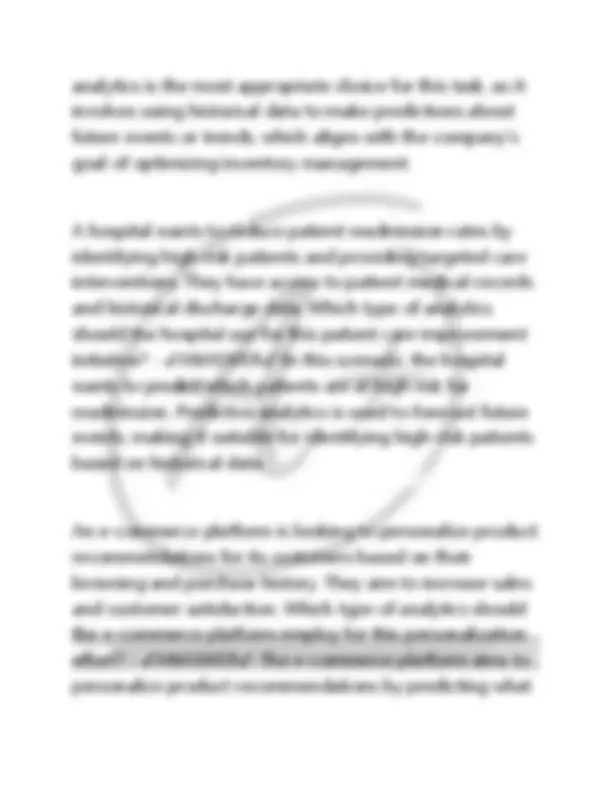
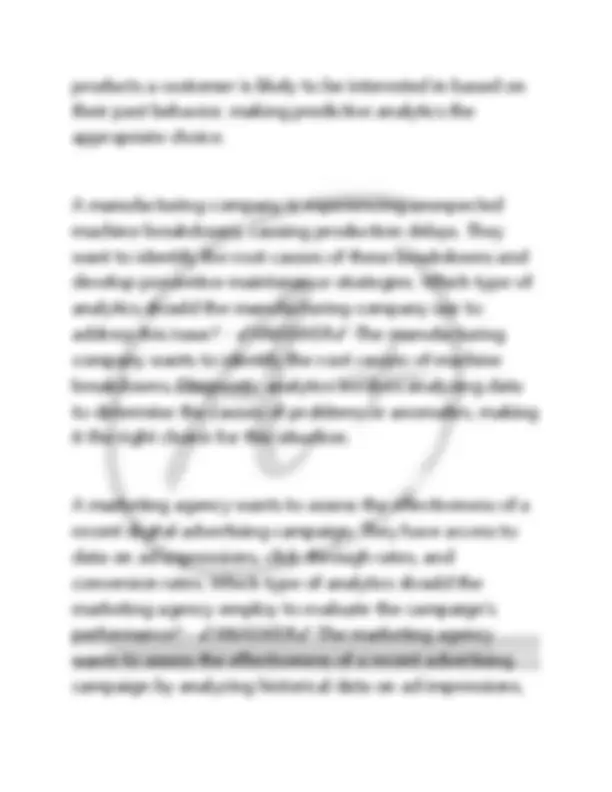
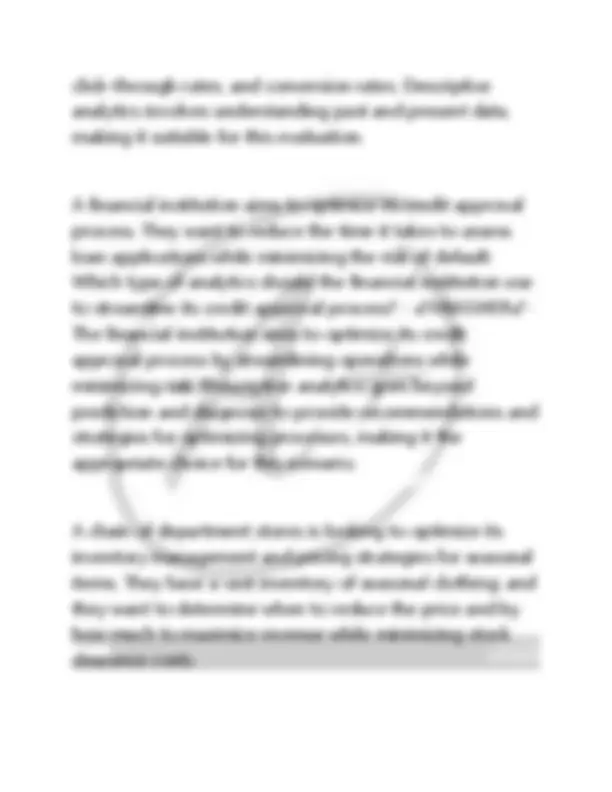
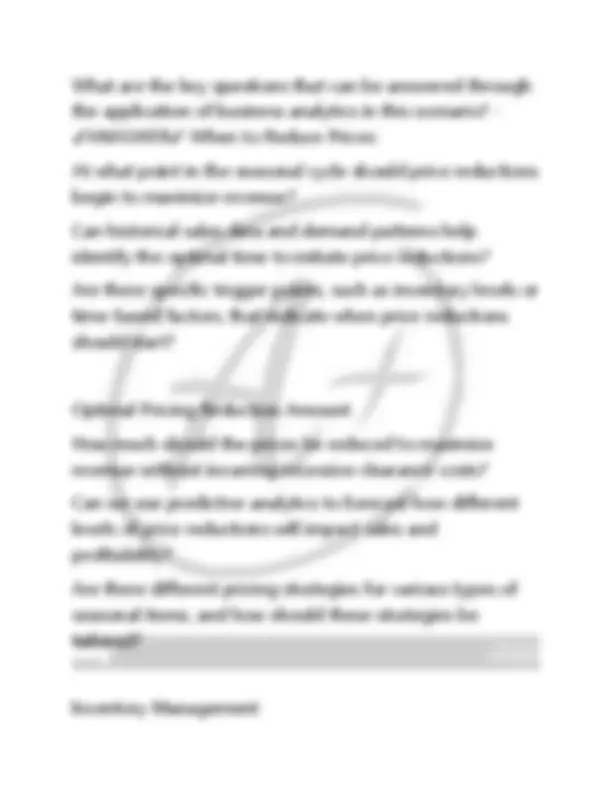
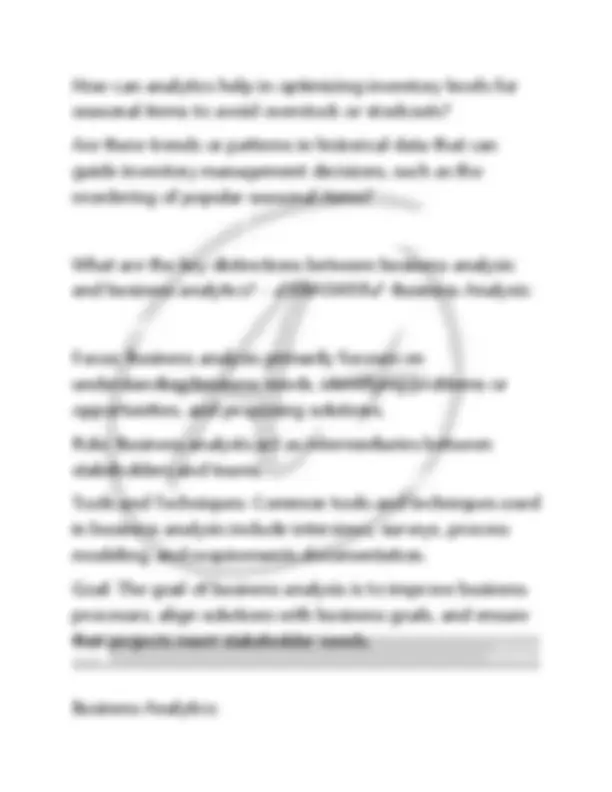
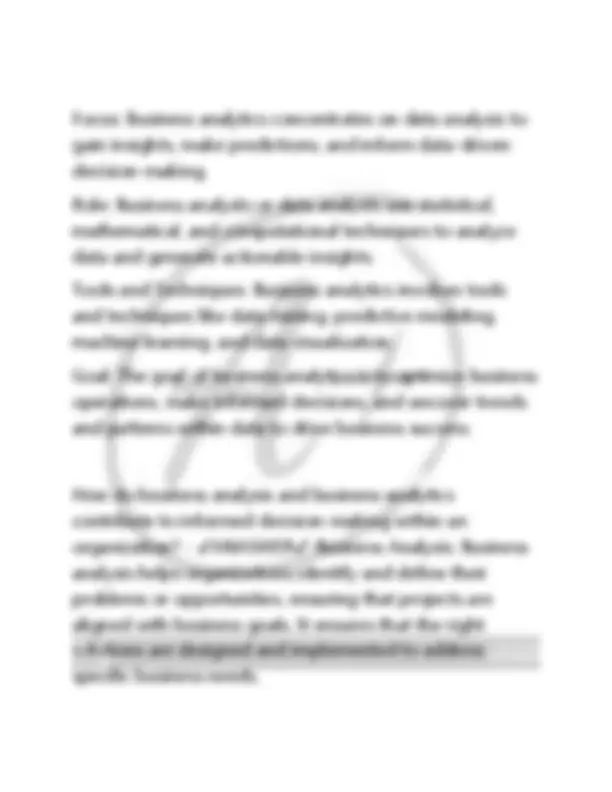
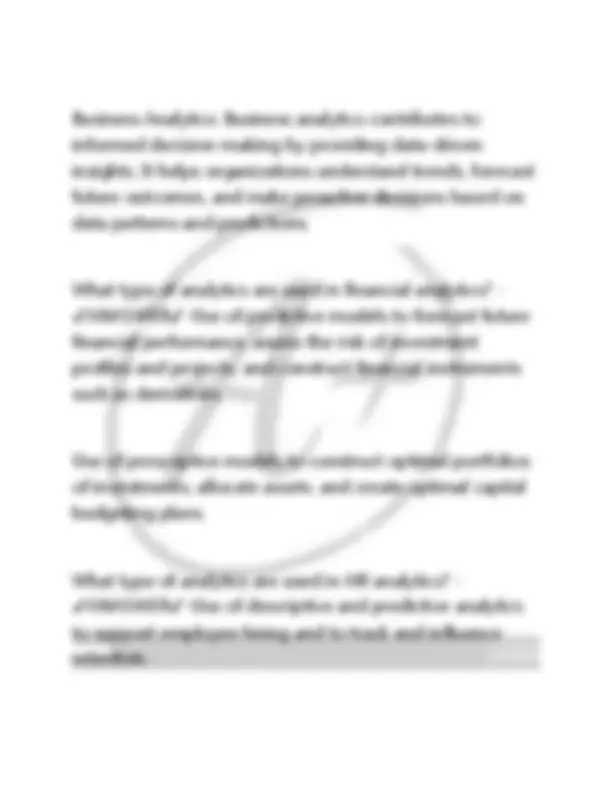
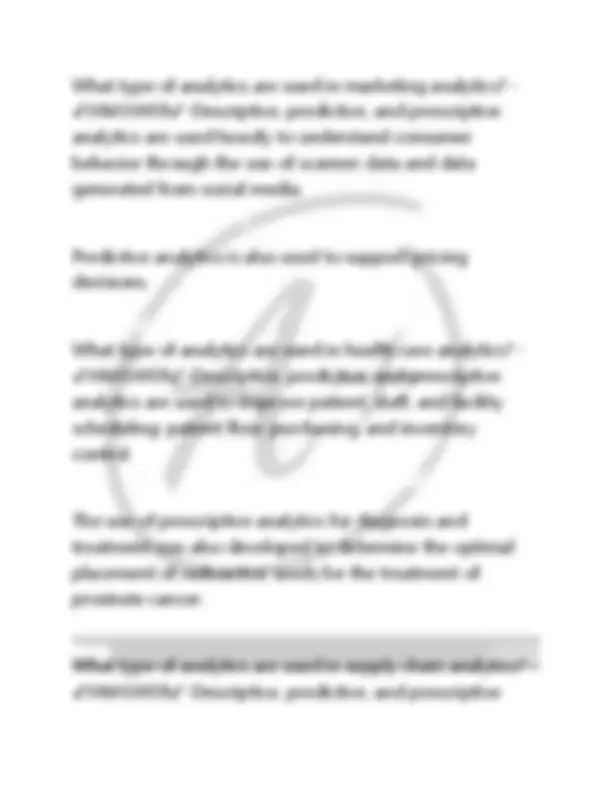
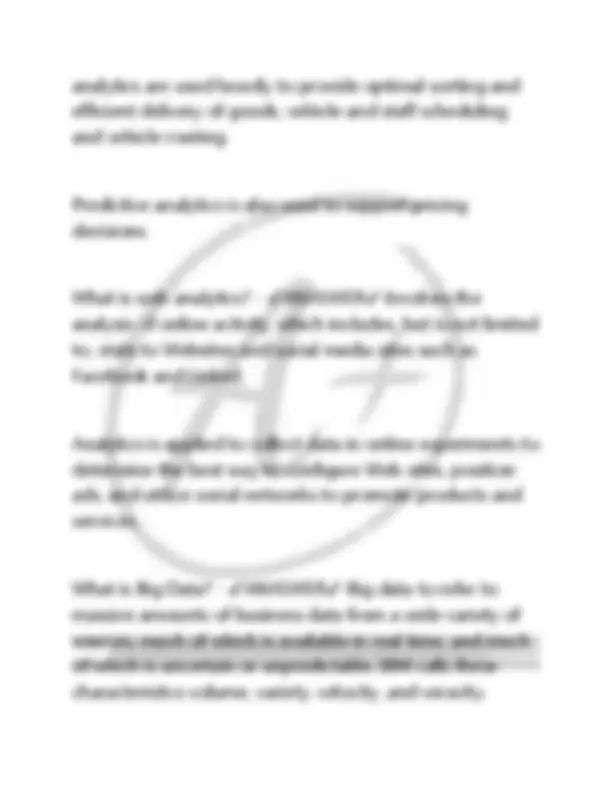
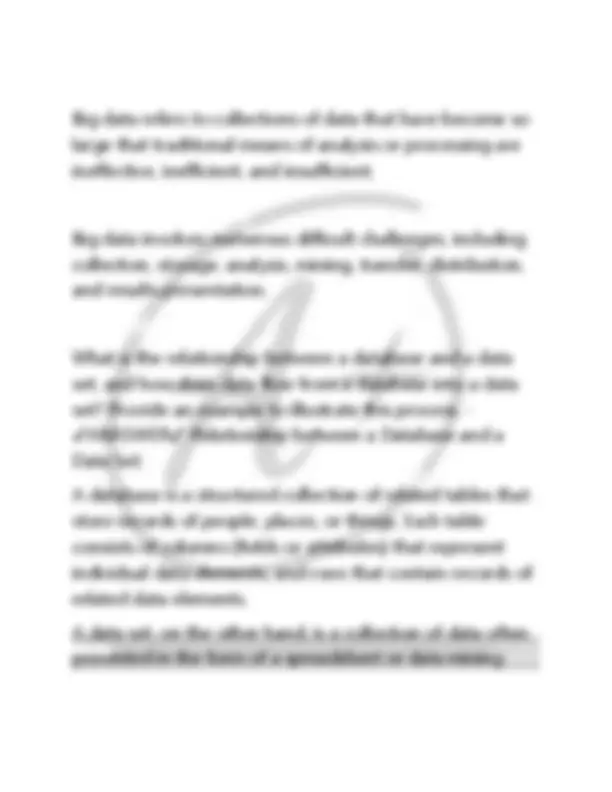
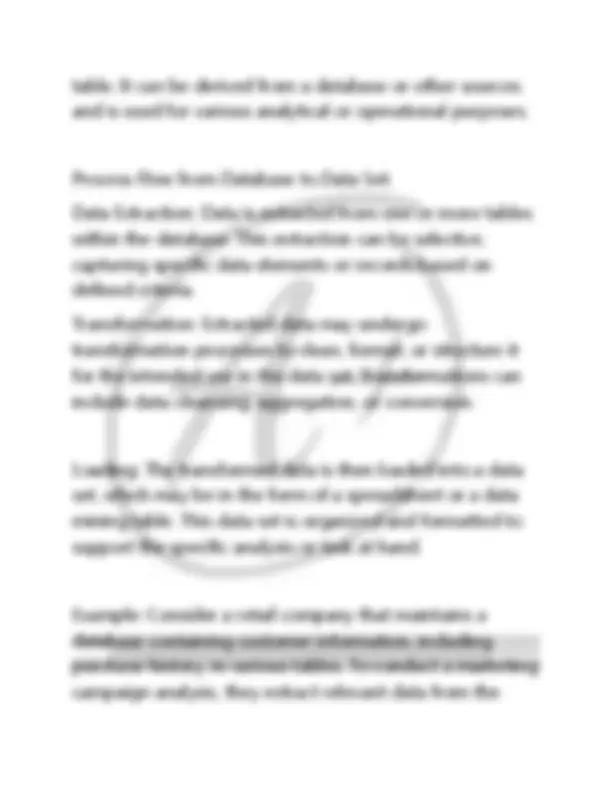
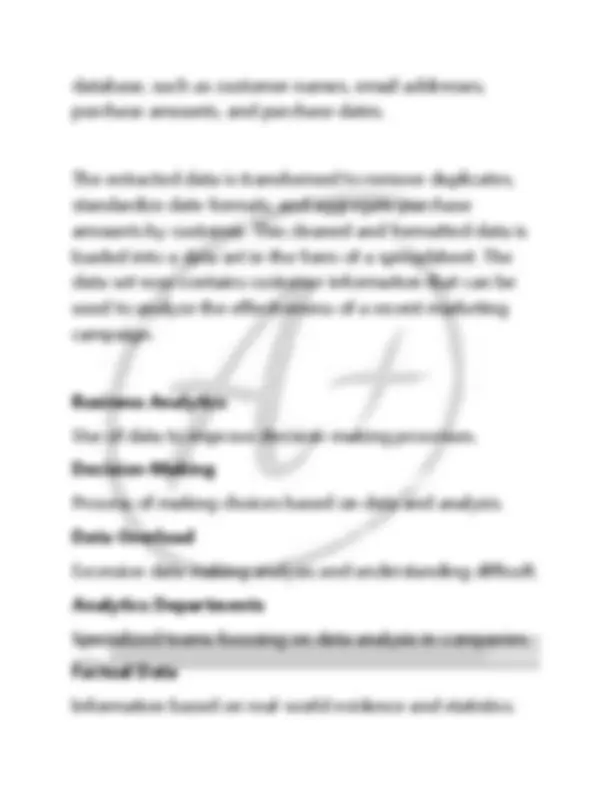
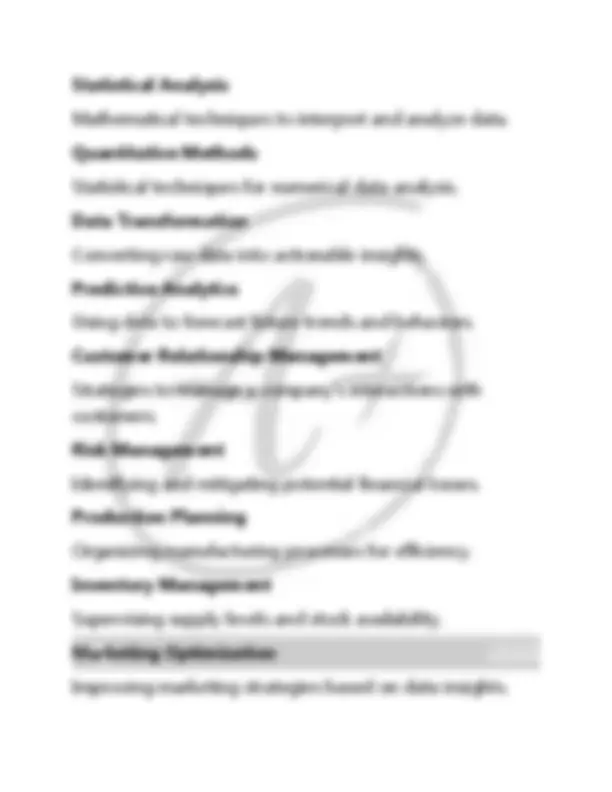
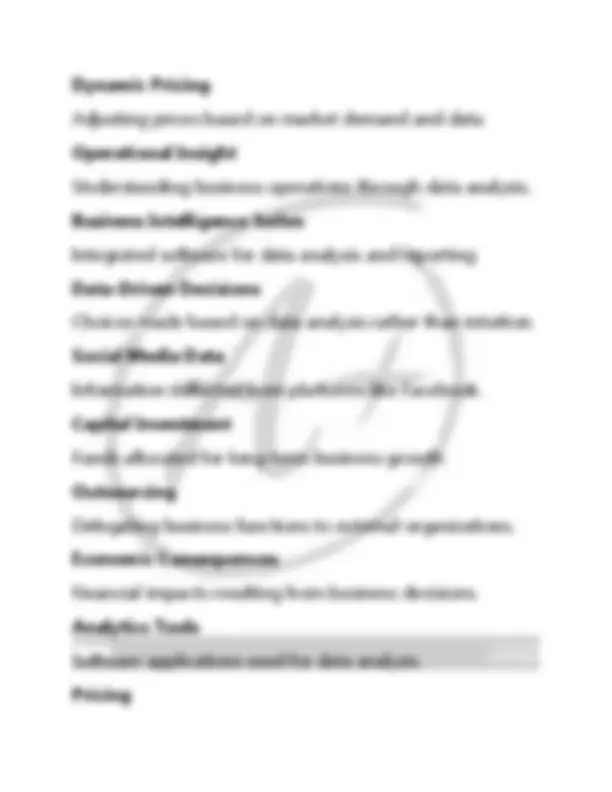
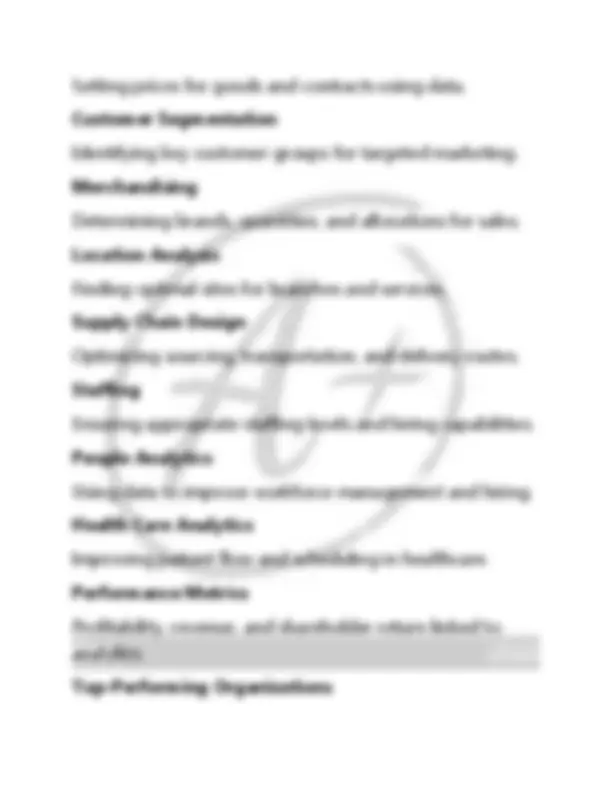
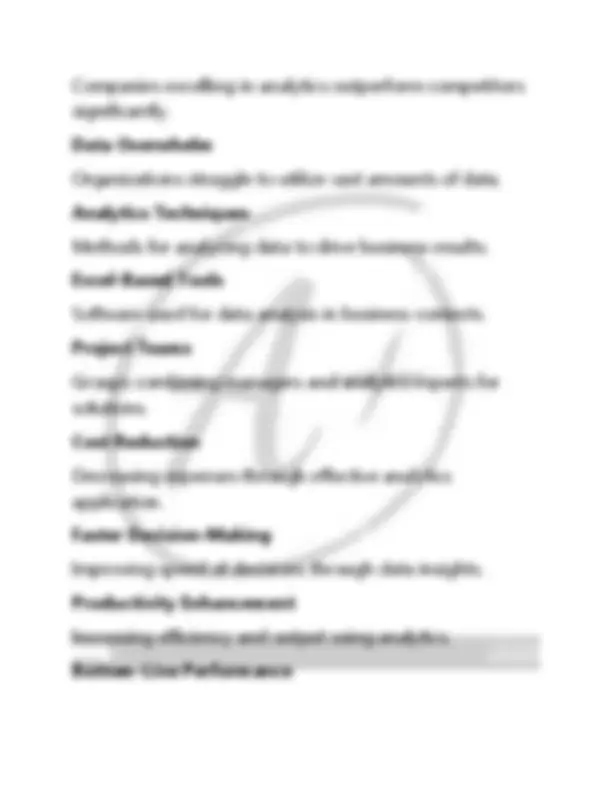
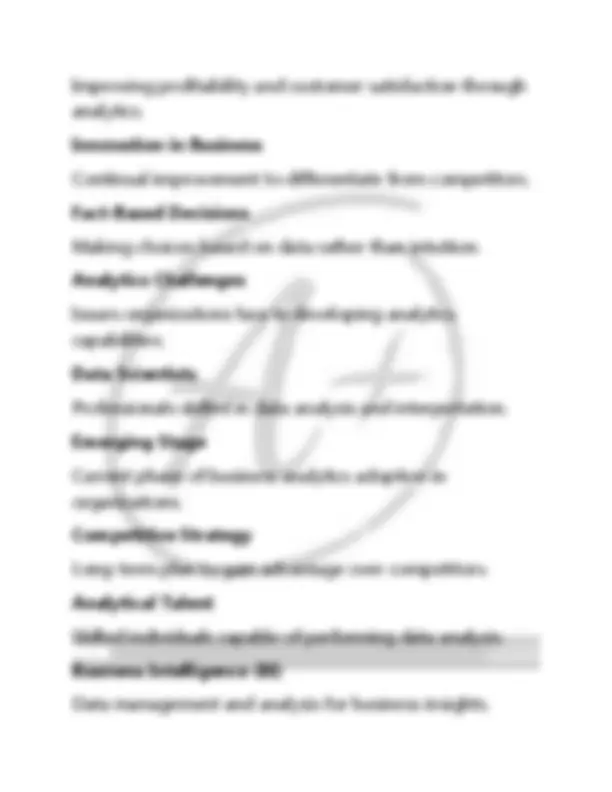
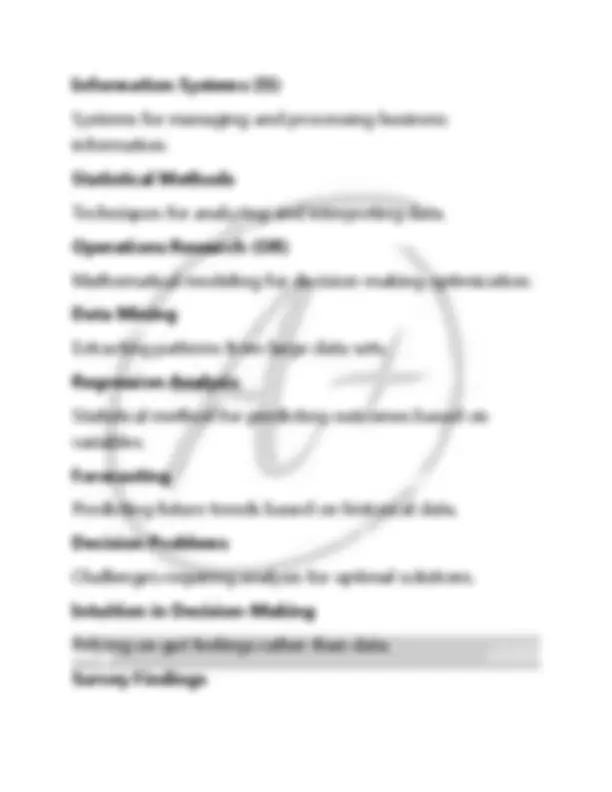
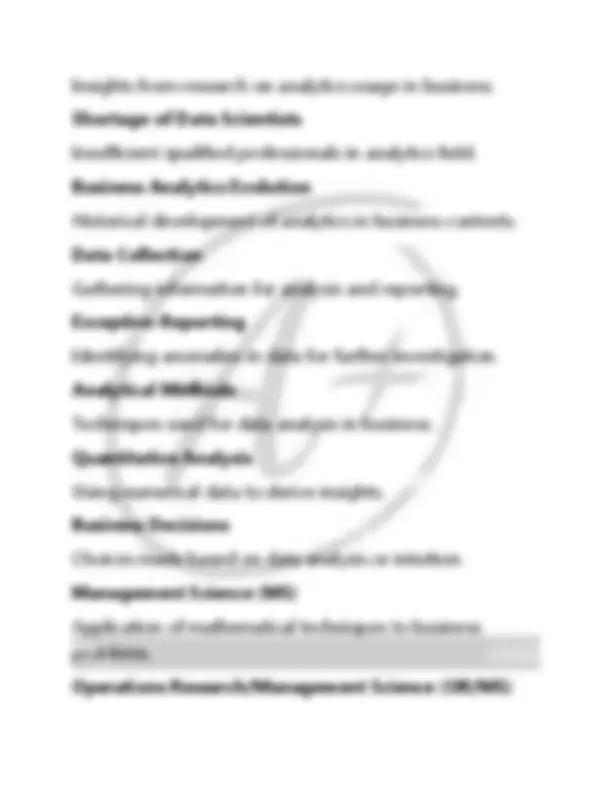
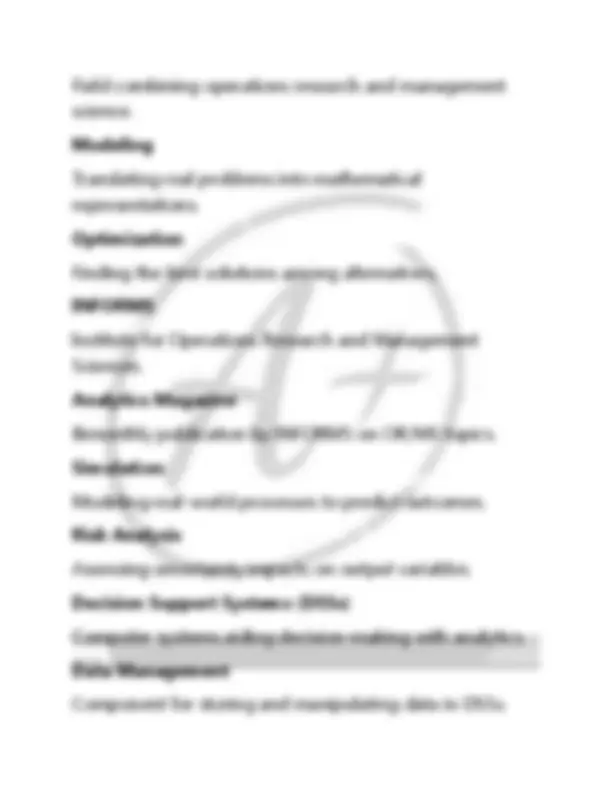
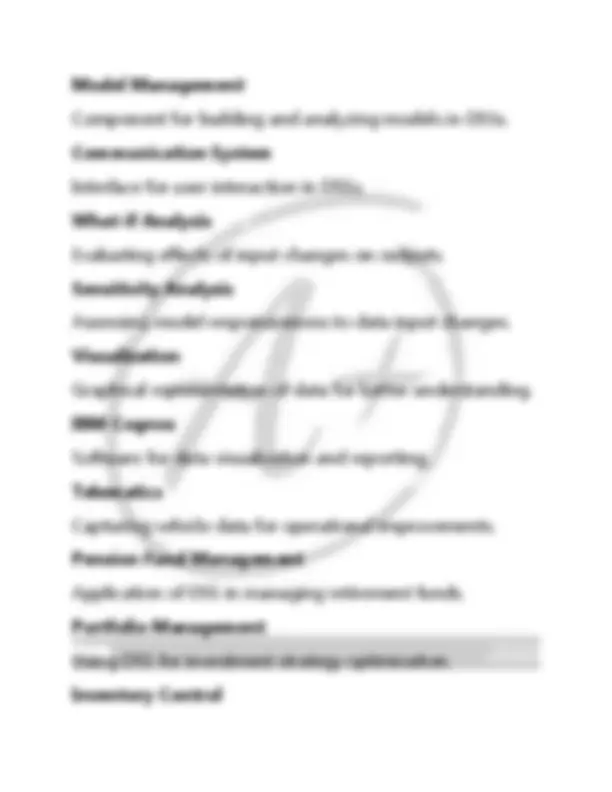
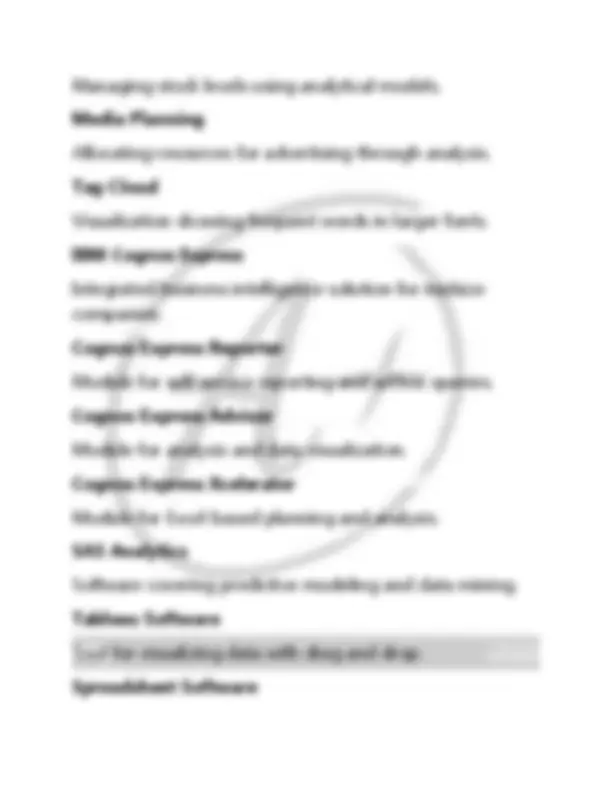
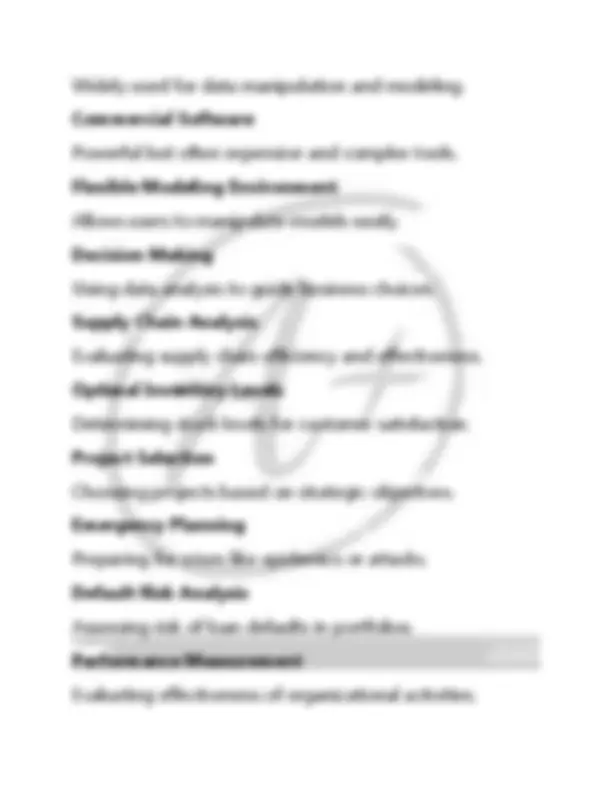
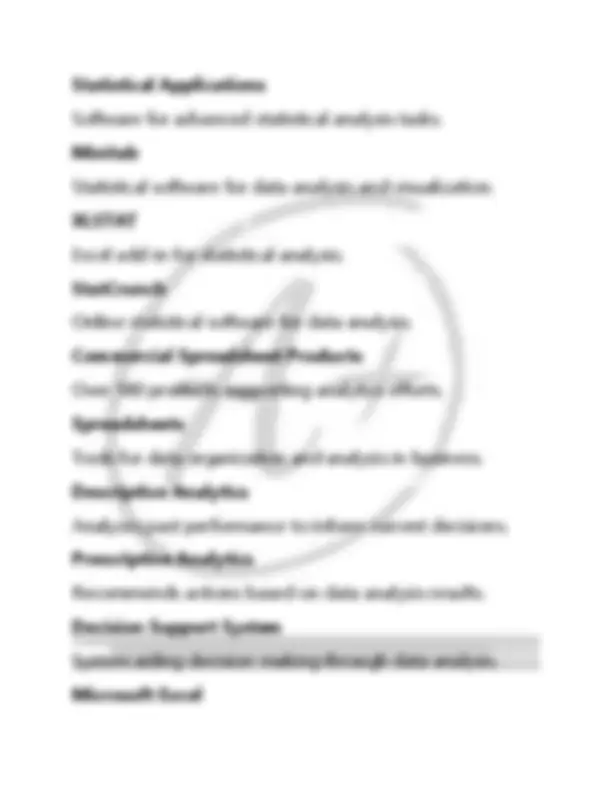
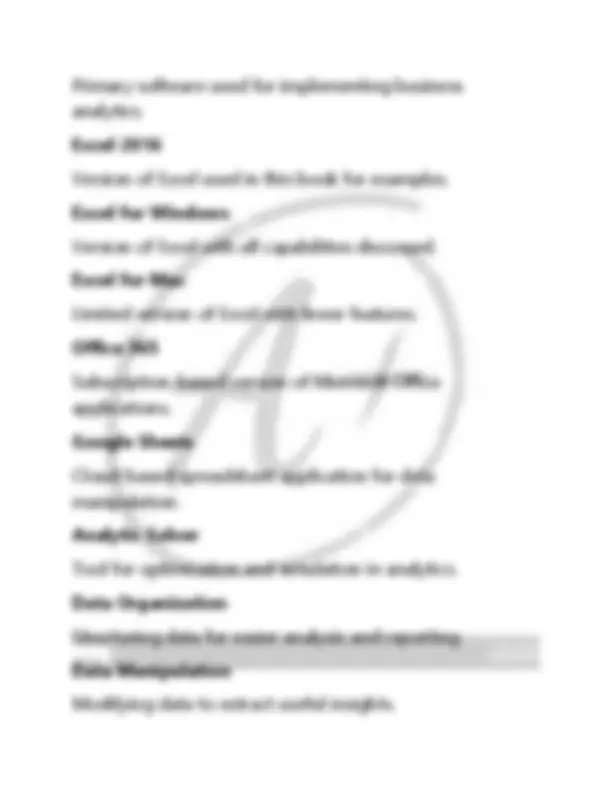
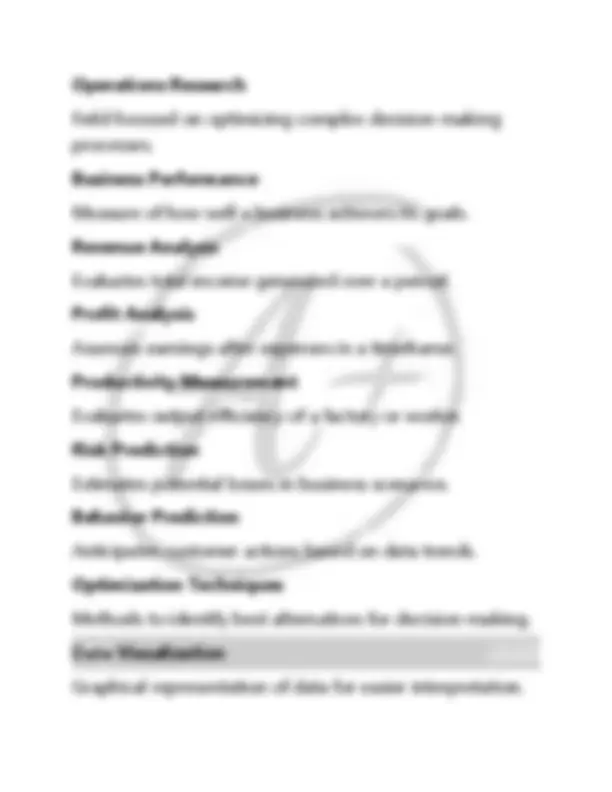
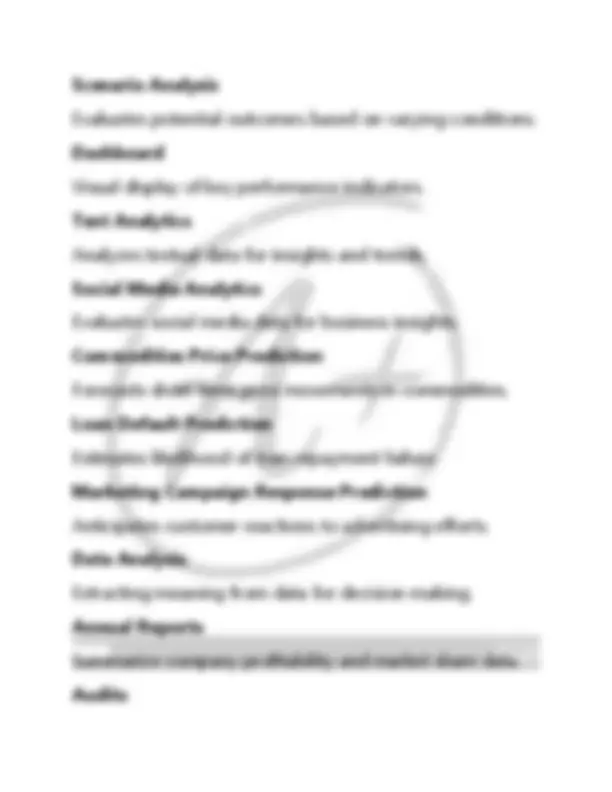
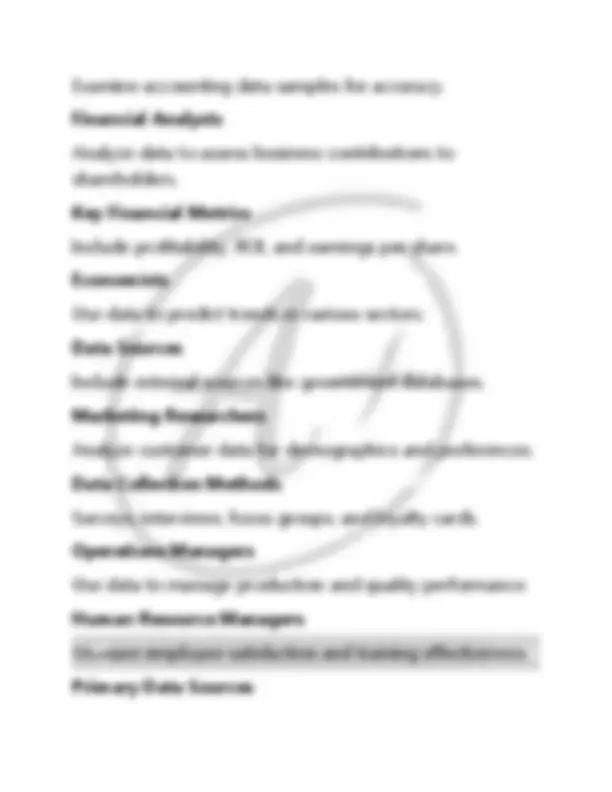
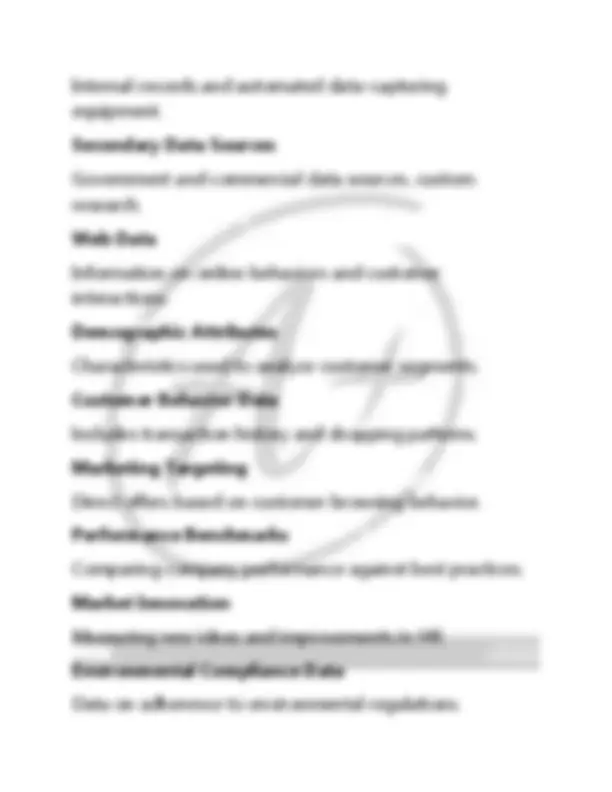
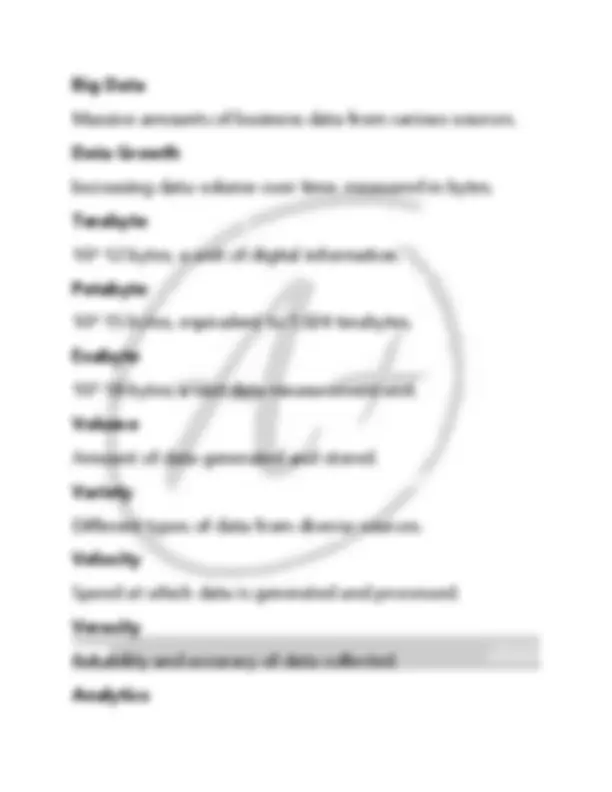
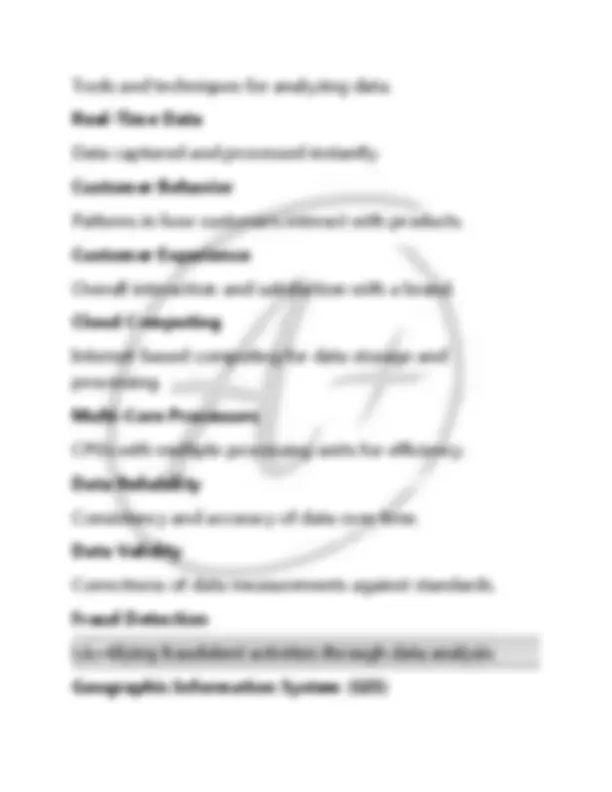
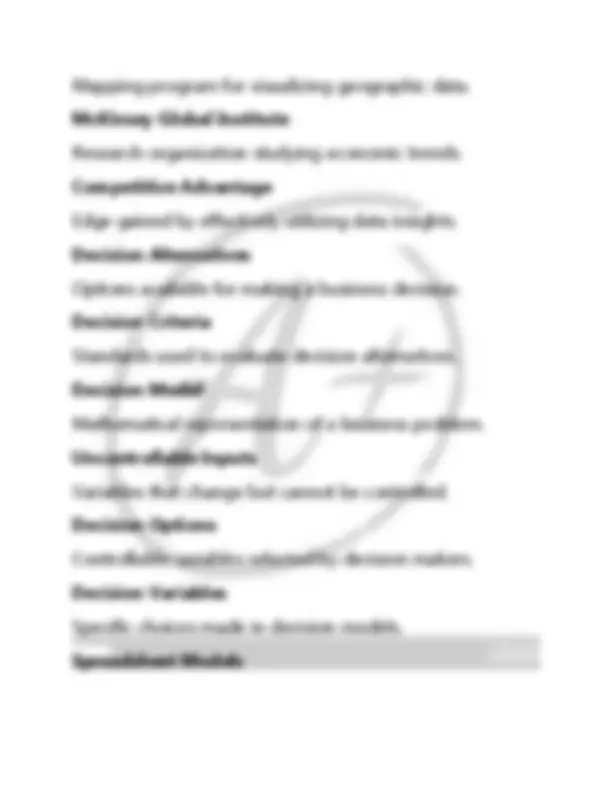
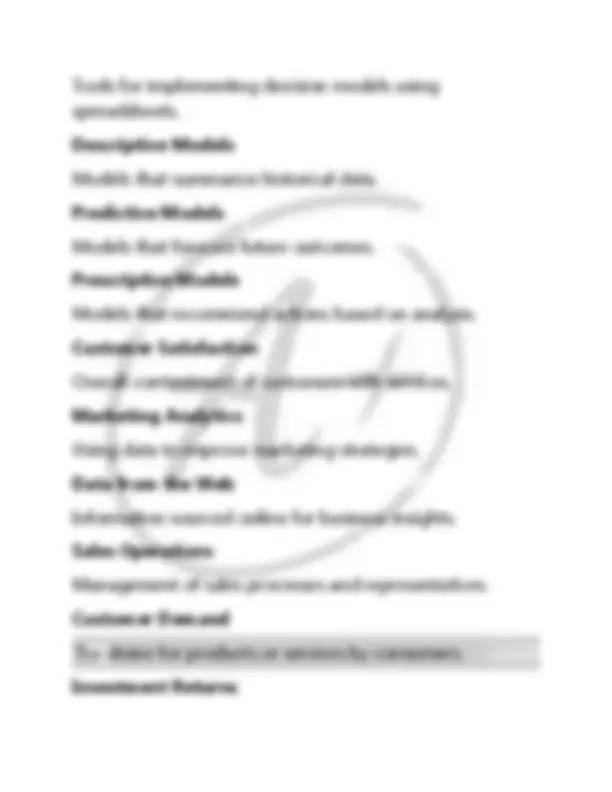
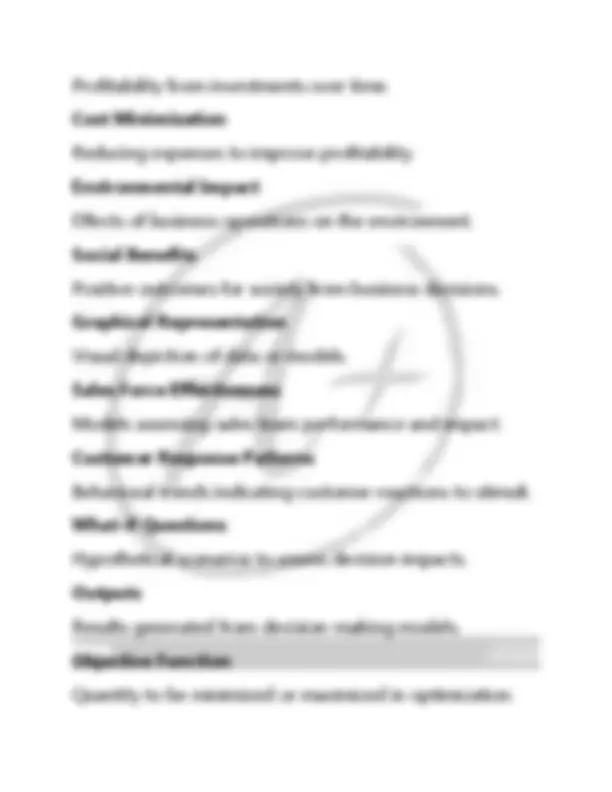
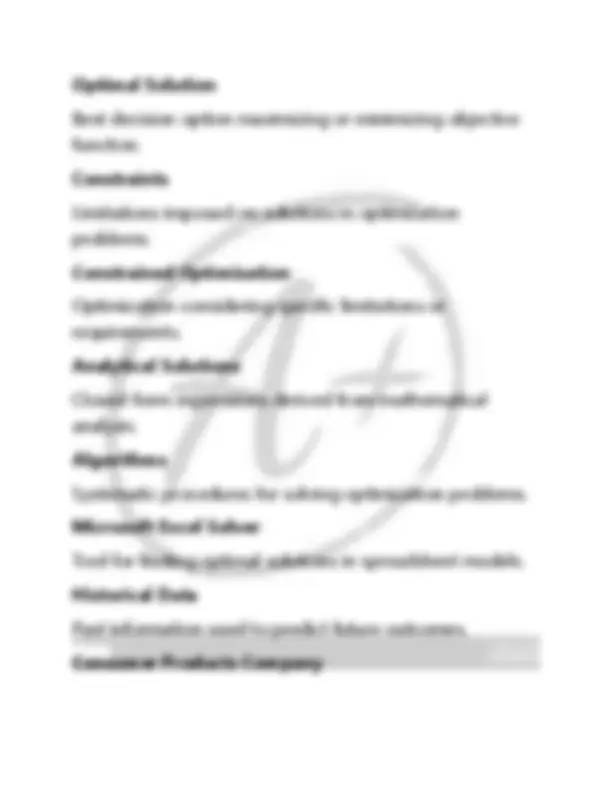
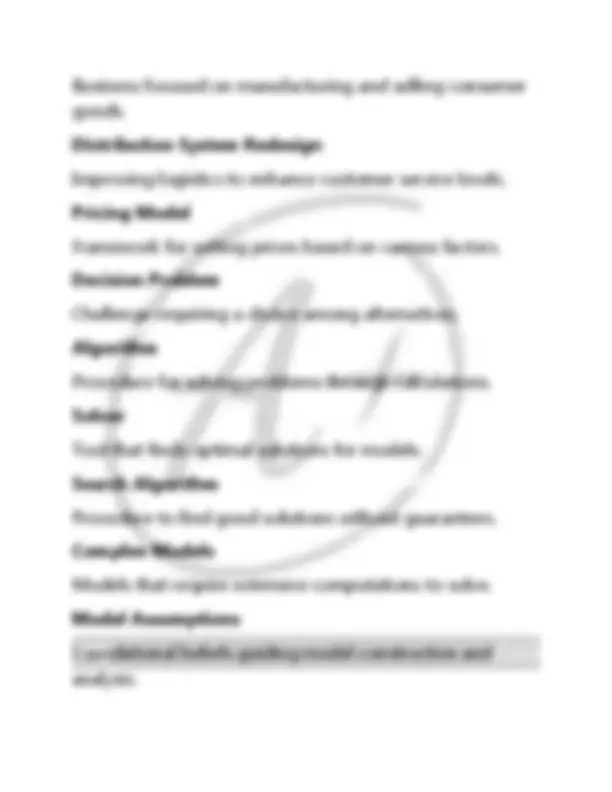
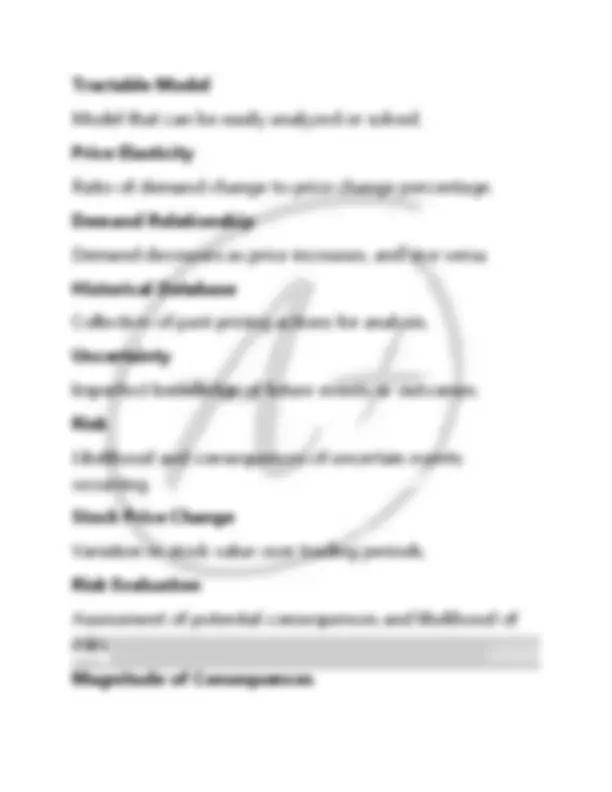
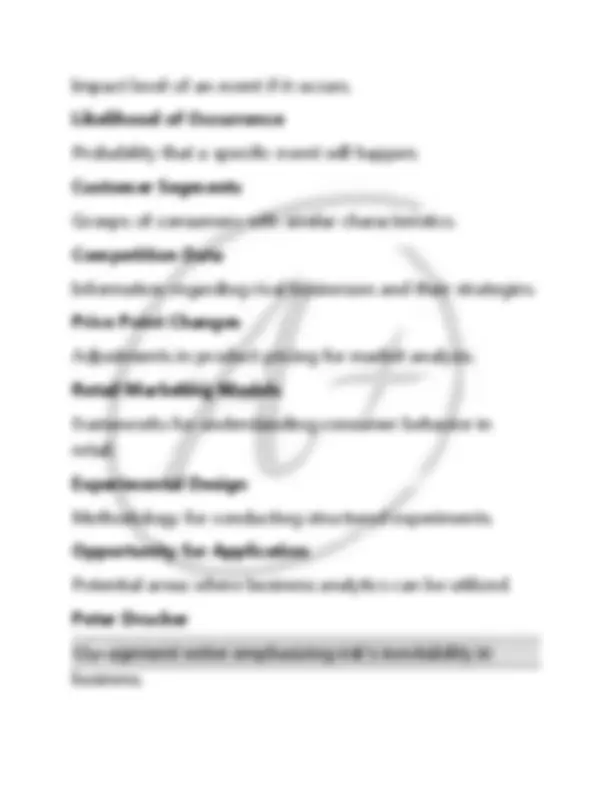
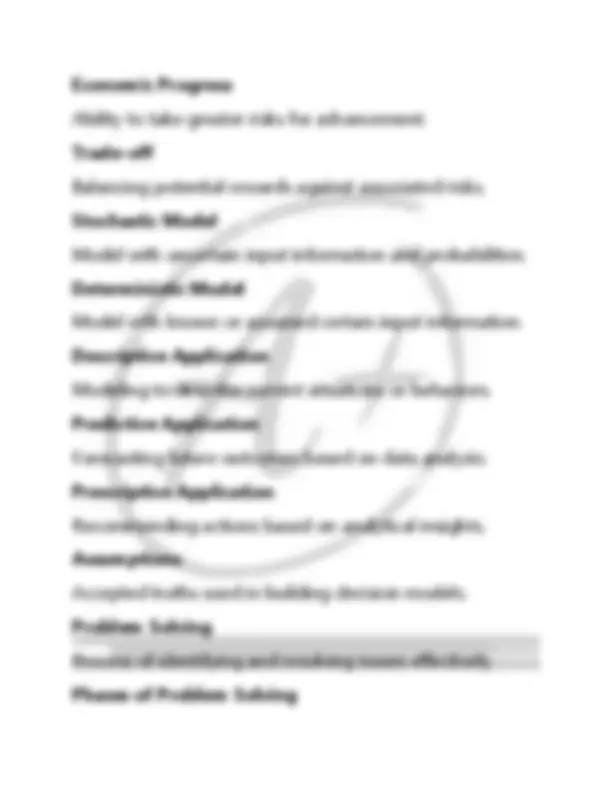
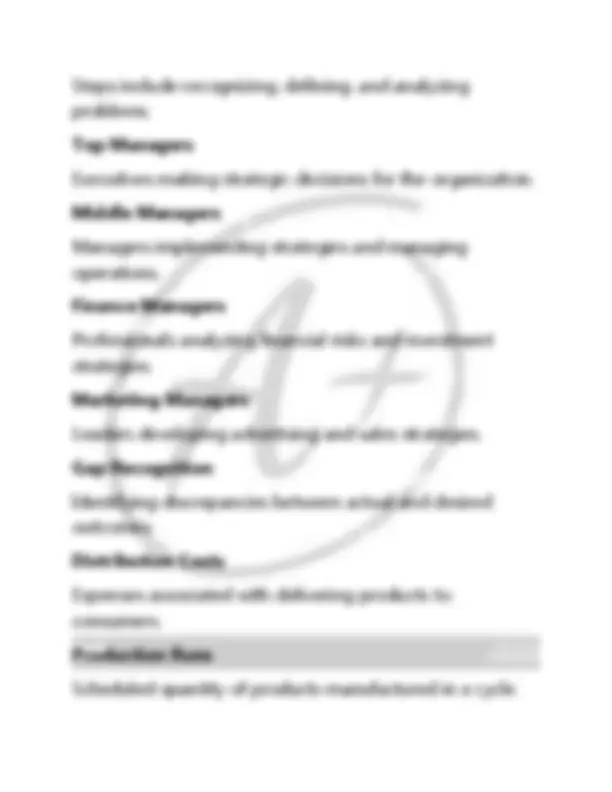
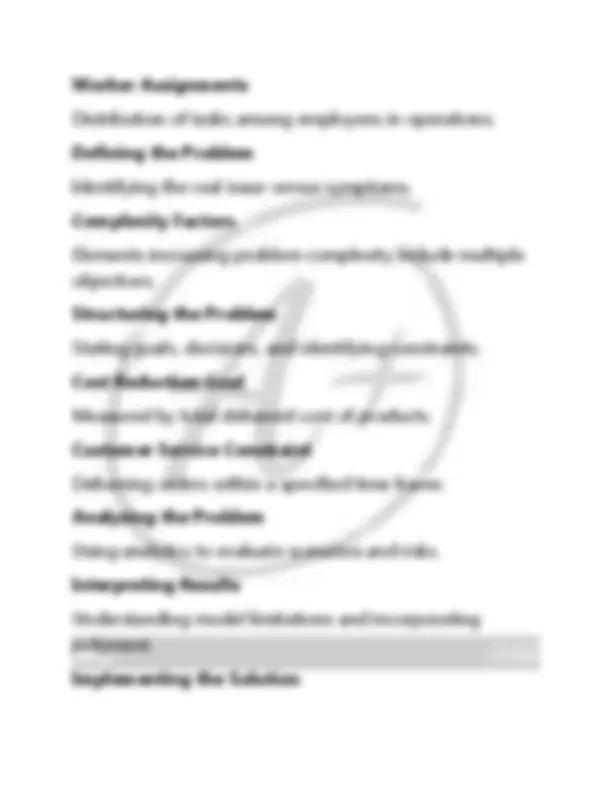
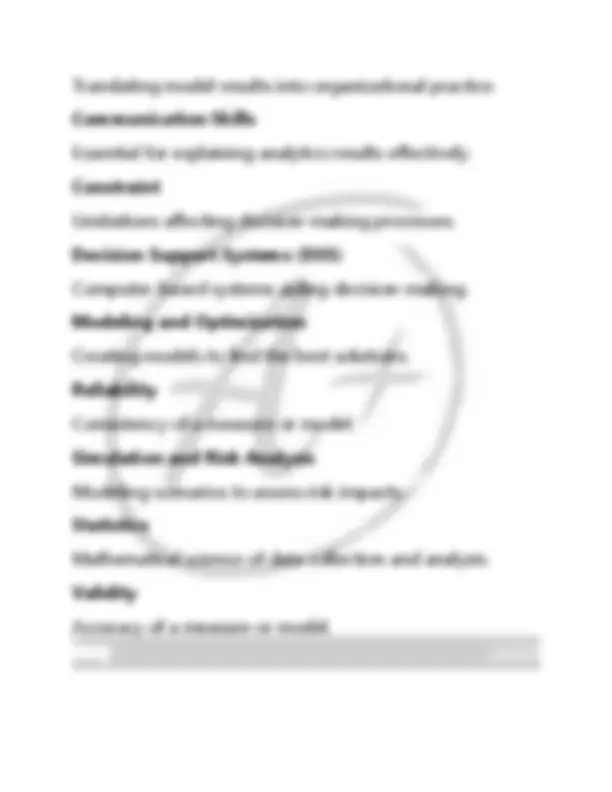



Study with the several resources on Docsity

Earn points by helping other students or get them with a premium plan


Prepare for your exams
Study with the several resources on Docsity

Earn points to download
Earn points by helping other students or get them with a premium plan
Community
Ask the community for help and clear up your study doubts
Discover the best universities in your country according to Docsity users
Free resources
Download our free guides on studying techniques, anxiety management strategies, and thesis advice from Docsity tutors
Introduction to Business Analytics 2025 1 180 All Questions With Answers Latest Update With RATIONALE Answers
Typology: Exams
1 / 68

This page cannot be seen from the preview
Don't miss anything!





























































Which of the scenarios do you think best demonstrates the use of business analytics? A. A retail company has collected data on customer purchasing behavior over the past year and uses statistical analysis to identify trends and preferences. Based on this
analysis, they adjust their product offerings and marketing strategies to better meet customer demands. B. A manufacturing company uses a basic spreadsheet to record daily production numbers and manually calculates performance metrics. They occasionally review this data but have not made any significant changes to their processes based on it. C. A startup tech company relies on intuition and personal experience when making decisions about product development and marketing strategies. They do not use any data analysis tools or techniques to inform their choices. D. A healthcare organization uses advanced software to analyze patient outcomes, treatment effectivenes - ✔ANASWER✔-A. A retail company has collected data on customer purchasing behavior over the past year and uses statistical analysis to identify trends and preferences. Based on this
targeted retention strategy that includes personalized marketing campaigns and loyalty programs. Identify the key business analytics competency demonstrated in the scenario. - ✔ANASWER✔-Analytics skills and tools to understand the data. Rationale: The scenario involves the use of advanced analytics tools to analyze customer data and gain insights. This aligns with the key competency of analytics skills and tools to understand the data. A manufacturing company has recently implemented a data-driven approach to improve its production efficiency. They have set up sensors and data collection systems throughout their production facilities to monitor various aspects of the manufacturing process, such as temperature, humidity, and machine performance. The collected data is regularly analyzed using statistical methods and machine learning algorithms to detect patterns and anomalies. When significant deviations or potential issues are identified, the production team
receives real-time alerts, allowing them to take immediate corrective actions to prevent downtime and quality issues. Identify the key business analytics competency demonstrated in the scenario. - ✔ANASWER✔-Information management skills to manage data. Rationale: The scenario involves the collection and management of data from sensors and data collection systems in a manufacturing context. This aligns with the key competency of information management skills to manage data effectively. A retail chain is experiencing a decline in sales in some of its stores. To address this issue, the company decides to conduct a comprehensive analysis of its sales data. They use advanced data visualization tools to create interactive dashboards that provide insights into sales trends, customer demographics, and product performance. The regional store managers are given access to these dashboards, allowing them to make data-driven decisions on inventory management, marketing strategies, and staff allocation.
Identify the key business analytics competency demonstrated in the scenario. - ✔ANASWER✔-Data- oriented culture to act on the data. Rationale: The scenario illustrates a corporate culture that values and encourages the use of data in decision-making and rewards employees for implementing data-backed strategies, aligning with the key competency of a data- oriented culture to act on the data. A financial services company regularly collects customer feedback through surveys and online reviews. They use natural language processing (NLP) and sentiment analysis tools to analyze this feedback and gain insights into customer satisfaction and pain points. Based on the analysis, they make improvements to their products, services, and customer support processes. Identify the key business analytics competency demonstrated in the scenario. - ✔ANASWER✔-Analytics skills and tools to understand the data.
A multinational corporation has implemented a data warehouse system to centralize and manage its vast amounts of business data. They have employed data quality techniques and data governance practices to ensure that the data is accurate, consistent, and up-to- date. This centralized data repository is used by various departments for reporting, analysis, and decision-making. Identify the key business analytics competency demonstrated in the scenario. - ✔ANASWER✔-Information management skills to manage data. A marketing agency conducts A/B testing on different ad creatives to determine which ones perform best with their target audience. They use statistical analysis to compare the conversion rates and click-through rates of different ad variations. Based on the results, they allocate their advertising budget more effectively to campaigns that yield higher returns on investment (ROI). Identify the key business analytics competency demonstrated in the scenario. - ✔ANASWER✔-Analytics skills and tools to understand the data.
B. A small bakery owner records daily sales figures in a notebook and occasionally glances at the numbers to get a rough idea of how the business is performing. They make decisions about inventory and pricing based on gut feeling and past experience. C. A neighborhood cafe owner collects customer feedback on paper comment cards but rarely reviews them. They rely on their own preferences and judgments to make menu and marketing decisions. D. A car rental company maintains a comprehensive database of vehicle rental history and customer feedback. They use data analysis to opt - ✔ANASWER✔-An e- commerce platform uses data analytics to track user behavior on its website and mobile app. They employ machine learning algorithms to make personalized product recommendations, resulting in increased sales and customer engagement.
Which of the following scenarios illustrates a successful application of business analytics in improving operational efficiency? A. A manufacturing company uses an outdated production system without any data analysis tools. They produce goods based on traditional forecasting methods and rarely adjust their production processes. B. An online delivery service collects data on delivery routes, driver performance, and customer feedback. They use this data to optimize delivery routes in real-time, reducing delivery times and fuel costs. C. A retail store occasionally reviews inventory levels and restocks products based on past experience, leading to occasional stockouts and overstock situations. D. A financial institution relies on manual data entry and paper-based processes for customer transactions and account management, making it difficult to analyze customer data for business improvement. - ✔ANASWER✔-
Inventory Optimization Business Analytics can help the retail chain analyze historical sales data to forecast demand accurately. This allows them to maintain optimal inventory levels, reducing excess inventory costs and avoiding stockouts. Advanced demand forecasting models and algorithms can be employed to improve accuracy further. Price Optimization Through data analysis, the retail chain can determine the optimal pricing strategy for their products. By analyzing competitors' prices, historical sales data, and customer sensitivity to pricing changes, they can set competitive prices that maximize profit margins while remaining attractive to customers. Marketing Effectiveness
Business Analytics can be used to track the performance of various marketing channels and campaigns. The retail chain can measure the return on investment (ROI) for each marketing initiative, identifying which channels and strategies are delivering the best results. They can then allocate their marketing budget more effectively to high- performing channels. Inventory and Supplier Insights Beyond optimizing inventory levels, Business Analytics can help the retail chain gain insights into supplier performance. By analyzing supplier data, they can identify which suppliers consistently deliver on time and provide quality products. This information can guide supplier negotiations and decisions. Real-time Monitori A chain of hotels wants to implement dynamic pricing strategies to maximize revenue from their room bookings. They have a vast database of historical booking data and
adjust prices accordingly. During peak seasons or high- demand periods, they can increase room rates, and during off-peak times, they can offer special promotions to attract more bookings. Competitive Analysis: The hotel can use Business Analytics to monitor competitors' pricing strategies and adjust their own rates in response. By tracking competitor pricing trends and occupancy rates, they can remain competitive and ensure that their rates are in line with market conditions. Real-time Pricing Adjustments: Implementing real-time pricing adjustments using Business Analytics allows the hotel to respond quickly to changes in demand. For example, if there are a sudden influx of bookings for a particular date or room category, the hotel can increase prices in real time to capture additional revenue. A/B Testing:
Business Analytics can facilitate A/B testing of different pricing strategies. The hotel can experiment with variations in pricing, such as offering discounts to specific customer segments, and analyze the impact on booking rates and revenue. This data-driven approach allows them to fine- tune p A financial planning firm is under pressure to provide informed investment decisions to a diverse client base with varying preferences. They have access to vast amounts of data about security prices and market trends. How can Business Analytics assist financial planners in analyzing this data effectively and making well-informed investment recommendations to meet the diverse needs of their clients? - ✔ANASWER✔-Client Segmentation: Business Analytics can help financial planners segment their clients based on their individual preferences, risk tolerance, investment goals, and time horizons. By categorizing clients into different groups, they can tailor investment strategies that align with each group's specific needs and objectives.
Real-time Monitoring: Implementing real-time data feeds and analytics tools allows financial planners to monitor the performance of client portfolios continuously. They can quickly identify deviations from the planned investment strategy and make timely adjustments to protect and optimize client investments. Client Communication: Business Analytics can assist in generating personalized investment reports and performance summaries for clients. These reports can include visualizations and clear explanations of investment decisions, making it easier for clients to How can business analytics be used to improve pricing decisions? - ✔ANASWER✔-Analytics can help businesses determine the optimal price for their products or services based on factors such as market demand, competition, production costs, and customer behavior.
Businesses can use pricing analytics to set dynamic and personalized prices, maximizing revenue while remaining competitive. Price elasticity analysis can identify how sensitive customers are to changes in prices, allowing businesses to make informed pricing decisions. What is customer segmentation? - ✔ANASWER✔- Customer segmentation involves categorizing customers into groups based on common characteristics, behaviors, or preferences. Analytics can analyze customer data to create segments and tailor marketing strategies, product offerings, and communication to specific customer groups. Segmentation can improve customer engagement, satisfaction, and retention by delivering personalized experiences.